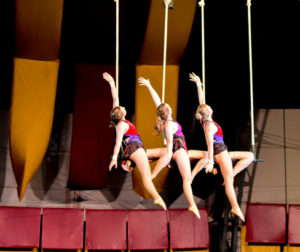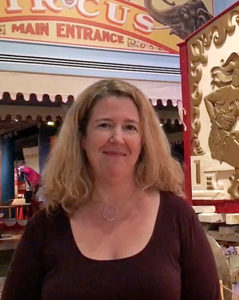Thursday, Nov. 14: Circus Performers and Popular Media in Fin de Siècle France: A Symposium
Circus Performers and Popular Media in Fin de Siècle France: A symposium sponsored by the FSU Winthrop-King Institute of Francophone Studies and the Department of Modern Languages and Linguistics, with the support of the Department of Art History, will be held on Thursday, November 14, 5–8 pm, in room 2009 WJB. The symposium will feature three guest speakers and a respondent, followed by a reception in the Art & Design Library (2020 WJB).

Why the circus? The circus holds a distinct place at Florida State University. FSU’s Flying High Circus is one of only two collegiate circuses in the United States, and the University’s Ringling complex in Sarasota includes an extensive collection of circus-related material at the first Circus Museum in the country. The exhibition Tour du Monde, currently on view at The Ringling, was curated by FSU Museum and Cultural Heritage Studies interns in connection with the 45th annual Nineteenth-Century French Studies (NCFS) conference Enchantment/Disenchantment hosted by FSU, in Sarasota on October 31-November 2, 2019.
Circus Performers and Popular Media in Fin de Siècle France symposium continues the NCFS 2019 theme of Enchantment/Disenchantment. Circuses, expositions, and other forms of popular entertainment enchanted Western audiences with exotic peoples from faraway places in the nineteenth century. These entertainments had a profound impact on the way Westerners perceived the peoples of other parts of the world. Symposium speakers will address the different lenses–ethnographic or spectacular, literary, art historical, or postcolonial–through which French-related popular entertainment media were viewed by the public in Europe and America.
Speakers:
 Jennifer Forrest (Professor of French, Texas State University), “The Time and Space of the Acrobatic Apparatus: The Hanlon-Lees Effect.”
Jennifer Forrest (Professor of French, Texas State University), “The Time and Space of the Acrobatic Apparatus: The Hanlon-Lees Effect.”
Prof. Forrest is the author of Decadent Aesthetics and the Acrobat in Fin de siècle France (Routledge, 2019). Her paper will discuss how circus acrobats applied the Hanlon-Lees Effect of aerial tumbling, juggling, and “knockabout” comedy, to entertain audiences with temporal and spatial confusion. In the space of any of the Hanlon-Lees’ tools, household objects, furniture, and the myriad structural features of the cityscape find their textures, angles, and surfaces repurposed for use in the apparatus’s universe. Prof. Forrest will show how the Hanlon-Lees Effect extended from circus performance to circus-related fine art and literature.

Katherine Brion (Assistant Professor of Art History, New College of Florida), “Disenchanting (Colonialist) Reality in Louis Dumoulin’s Panoramic Tour du Monde.”
Prof. Brion’s paper is inspired by the poster Tour du Monde from the Ringling Circus Collections, which is on display in the Art & Design Library (2020 WJB). She discusses how the poster Tour du Monde, advertising the 1900 Paris Exposition Universelle, not only demonstrates the “panoramania” popular at the exposition, but also nations or colonies and their commercial counterparts, which offered panoramic attractions. While these displays sought to produce reality effects, Prof. Brion argues that the proliferation of reality effects in the Tour du Monde suggested the artifice rather than the authenticity of these spectacles‒thereby troubling the global, colonialist frameworks imposed in the exhibition as world and extended to the “world-as-exhibition.”
 Jennifer Lemmer Posey (Tibbals Curator of Circus at the John and Mable Ringling Museum of Art, and FSU Art History alumna), “Fin de Siècle Entertainments in The Ringling Circus Collections.”
Jennifer Lemmer Posey (Tibbals Curator of Circus at the John and Mable Ringling Museum of Art, and FSU Art History alumna), “Fin de Siècle Entertainments in The Ringling Circus Collections.”
While the name Ringling conjures images of the American circus experience, the collections of The Ringling Circus Museum speak to the long history and international nature of the circus and allied arts. With objects dating as far back as the 17th century, the collection is filled with prints, bills, photographs and other materials that illuminate the evolution of performance, entertainment, and print culture in cultures around the globe. Beginning with posters and ephemera created for circus performances in fin de siècle France, Curator Posey’s paper will explore how one discovery leads to the next in the collection, broadening our understanding of the cultural impact of the circus.
Robert Stilling (Associate Professor, English Department, FSU) is the symposium respondent. Prof. Stilling is the author of Beginning at the End: Decadence, Modernism, and Postcolonial Poetry (Harvard U.P., 2018), which examines the revival of interest in decadence and aestheticism among contemporary transnational writing and art across Britain, Ireland, Kashmir, Nigeria, and the Caribbean.
